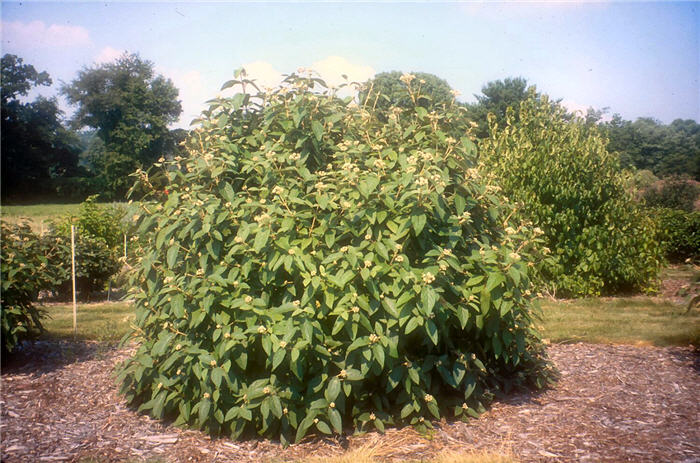| Botanical Name: Viburnum x rhytidophylloides 'Willowood' | |
| Common Name: Willowood Viburnum |

-
Anatomy
-
Culture
-
Design
Plant Type
Shrub
Height Range
6-12'
Flower Color
White
Flower Season
Spring
Leaf Color
Green, Grey Green
Bark Color
Brown, Grey
Fruit Color
Black
Fruit Season
Fall
Sun
Full, Half
Water
Medium
Growth Rate
Moderate
Soil Type
Clay, Loam
Soil Condition
Average, Rich, Poor, Well-drained, Dry
Soil pH
Acid, Neutral, Basic
Adverse Factors
n/a
Design Styles
English Cottage, Formal, Meadow, Mediterranean, Ranch, Woodland
Accenting Features
Fall Color, Showy Flowers, Silhouette
Seasonal Interest
Winter, Spring, Summer, Fall
Location Uses
Background, Shrub Border, Foundation, Walls / Fences
Special Uses
Hedge, Screen, Mass Planting
Attracts Wildlife
Birds, Butterflies
Information by: Stephanie Duer
Photographer:
Photographer:
-
Description
-
Notes
A cultivar of V. x rhytidophylloides, selected for particularly lustrous foliage and arching habit. As with 'Alleghany,' it grows about 10 to 12 feet tall and wide, and is useful as a screen, hedge, or in a shrub border. White May flowers are followed by fruit ripening from red to black. Leaves are large, slightly fuzzy, and their persistence provide year long interest.
Grow in nearly any type of soil as long as it is well drained, though it grows best in sandy-loam to clay-loam soils. Moderately drought tolerant once established, especially is placed on the east or north sides of buildings or fences. Doesn't require pruning and resents shearing, so prune selectively to control size as needed (see Guides).